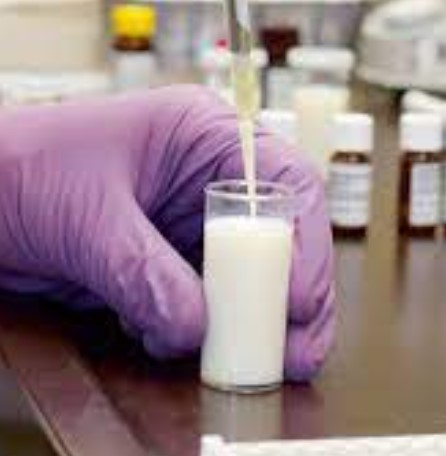Tests for antibiotics in milk, 10 interesting facts

Photo is illustrative in nature. From open sources.
Tests for antibiotics in MILK are an integral part of the quality and safety control system for dairy products. They allow you to detect the presence of antibiotics that may get into milk due to treatment of animals or errors in the processing process. These tests are carried out both in manufacturing plants and in laboratories, where specialists use various methods such as ELISA to accurately and quickly determine antibiotic levels. The results of these tests not only ensure consumer safety, but also help prevent the development of antibiotic resistance in bacteria. Testing for antibiotics in milk plays a key role in maintaining high product quality standards and protecting public HEALTH.
1. Tests for antibiotics in milk are an important tool for monitoring milk quality and food safety.
2. These tests can detect the presence of antibiotics in milk, which may be introduced due to animal treatment or errors in the processing process.
3. One of the main methods for testing for antibiotics in milk is the enzyme-linked immunosorbent assay (ELISA), which allows for rapid and accurate detection of antibiotics.
4. Tests for antibiotics in milk are carried out both at production plants and in food quality control laboratories.
5. Test results for antibiotics in milk help prevent antibiotics from contaminating products and protect consumer health .
6. Continuous monitoring of antibiotic levels in milk helps reduce the risk of bacterial resistance to antibiotics.
7. Some tests for antibiotics in milk can be done on the farm or in the production plant, allowing for a quicker response to potential problems.
8. There is a wide range of antibiotics that can be used in animal production, so tests for antibiotics in milk must be sensitive to different drugs.
9. Violation of standards for the content of antibiotics in milk can lead to fines for producers and negatively affect the reputation of companies.
10. By testing for antibiotics in milk, consumers can be confident in the safety and quality of dairy products, which helps support the health and well-being of society.
Testing for antibiotics in milk plays an important role in ensuring food safety and quality, and helps prevent potential problems with antibiotic resistance.
Read together with it:
- He crawled to the icon with prayer. The true story of a man who overcame drug addiction.Alexander Ovchinnikov. Topic News. Our project's hero was a drug addict for many years. The thought that this was a dead end never left him, but his addiction proved stronger. One day, when he could no longer walk, he crawled to an icon in prayer. This became his first step toward a new life. Today, he heads a charity center that helps those who have given up hope and are unable to quit ALCOHOL an...
- Rosselkhoznadzor has banned meat imports from two Belarusian enterprises due to violations.In addition, three other Belarusian producers are now subject to strict laboratory monitoring due to initial deviations: azithromycin was found in poultry MEAT from Druzhba Poultry Farm, and the pesticide imidacloprid was found in honey from Pchalyar Polachchyny Farm. Powdered MILK from Luninetsky Dairy Plant was also found to containcoli bacteria . These measures were taken at the request of the ...
- Pharmaceutical companies see a threat to EU security due to bacteria in UkraineAntibiotic-resistant superbugs have been detected in Ukrainian soldiers since the beginning of the conflict, and now they pose a threat to Europe, according to a foundation developing antibiotics.The Ukrainian conflict threatens Europe with antibiotic-resistant "superbugs," said Henry Skinner, CEO of the AMR Action Fund, which specializes in investing in antimicrobials. His article was published o...
- Stress in livestock: How housing conditions affect their health and productivityFor example, early separation of calves from their mothers causes a sharp surge in cortisol, which weakens the immune system and increases vulnerability to disease. The article also emphasizes that improper milking and housing practices can cause chronic stress and reduced productivity. Furthermore, the problem of lameness in cows is considered a consequence of living conditions, which can be impr...
- Брянская область вошла в число лидеров среди регионов России по товарообороту на БУТБ12 ноября, Минск. Брянская область вошла в число лидеров среди регионов России по товарообороту на Белорусской универсальной товарной бирже. Об этом сообщили БЕЛТА в пресс-службе БУТБ.Согласно данным о сделках, заключенных резидентами РФ на Белорусской универсальной товарной бирже в январе - октябре 2......
- Роспотребнадзор подводит итоги контроля мясной продукции в Тамбовской области за 2025 годПоложительные аспекты: Не было выявлено нарушений санитарно-химических показателей, присутствия патогенных микроорганизмов, ГМО, паразитов, антибиотиков и радиационного загрязнения. Проблемные моменты: Отмечается ухудшение по физико-химическим показателям — 5,88% образцов не соответствует стандартам, по сравнению с 1,5% в 2......




























































